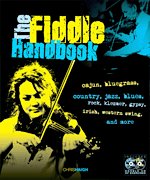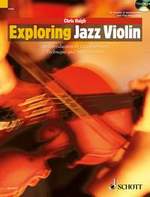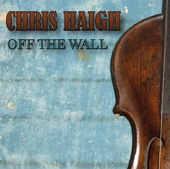
MENU TO FIDDLE STYLES:
CROOKED TUNES
One of the things that makes traditional music easy to play is that it falls into simple, predictable patterns. The most common is two eight bar sections, each repeated to make 32 bars in all. This is the case with the great majority of jigs, reels and so on. The 8-bar section is the usual length required to do each section of a ceilidh dance, and also works well with the phrasing of simple song structures. Variations on the theme may occur where a tune might have extra parts. The Kid on the Mountain, for example, is a five-part slip jig, and College Groves is a three part reel. Sometimes there is no repeat. “Single Reels”, such as Wind that Shakes the Barley, have 8 bar sections which are not repeated. Some tunes are “asymmetrical”, with one section repeated and one not. The Sailor’s Bonnet, for example, has an A section which does not repeat, and a B section that does. Such tunes may be chosen by ceilidh bands to suit a particular set of dance steps which, instead of the usual 32 bars, may call for 40, or 48 bars for example.
However, things are not always so straightforward.
An old English jig called the Black Joak has an A section of 6 bars, and a B section of 10. It is used for various Morris dances, and you might conclude that the phrasing was tailored to suit the dance. However, it seems likely that in fact the reverse is the case. The Joak actually started out in the early 18thC as a popular street song whose vulgar lyrics could not possibly be reproduced here. The bar structure reflected the phrasing of the lyrics. It proved so popular that numerous other “Joaks” were published, all copying the same structure.
3/2 hornpipes were a common dance form, particularly in northern England, up until the mid 18thC. There are normally four bars to a line, and with three minims to the bar there are many different and interesting ways of grouping the quavers, often involving syncopation. Nowadays hornpipes are mostly in 4/4, and the 3/2 rhythm can seem quite baffling to the uninitiated.
Within the British/Irish tradition, that is about as far as tunes go in terms of eccentric phrasing. However, in North America you can find many genuinely “crooked” tunes. In these kind of structure, not just the number of bars in a section is odd, but there may be actually fractions of a bar added or omitted.
Why write a crooked tune?
There are numerous possible reasons why tunes might be crooked.
1. The most obvious reason you might think of is that many old time fiddlers were simply careless and/or untrained. Learning and playing by ear, they never had to think about how many bars there should be to a line, or beats to the bar. Mistakes in learning, or personal eccentricities of style could therefore lead to odd structures becoming established.
2. Many dances, particularly step dances (semi-improvised dances often performed by a solo dancer), do not require fixed lengths or sections, so that an extra half bar here or there makes little difference.
3. Many fiddlers used to play solo, in which case the idea of coordinating an irregularity in rhythm with other musicians did not occur.
4. One of the traditions with the greatest number of crooked tunes is the Métis style of NW Canada. The Métis are the “mixed” European and Native peoples whose music includes influences from Ireland, Scotland and France, as well as the Native tradition. The latter seems to be a source of many unusual structures; five beat phrases are common in some tribal music.
5.Traditional French songs also may have contributed; these often have three-bar phrases where in the British Isles you would expect a two bar phrase. Crookedness is an important feature of Québeqois music.
6 As we saw with the Black Joak, many old tunes were closely bound up with songs. The singing tradition has less reason than the dance to keep strict metre, and often pauses for breath between lines or verses could become stylised and embedded into tunes, adding extra beats here and there. An interesting variation on this idea is in the bluegrass and country music of the 30’s and 40’s, when bands performing at the Grand ole Opry, or for studio recording, had to play around a single microphone, weaving in and out in turn to get closer for a solo. Often an extra bar or so would be added between verses to allow the singer or soloist time to get into position, and this structure in particular songs exists today, long after the need for it has disappeared.
7. In folk singing, and indeed church and choral singing, there is a often a habit of “dwelling” on certain notes, or pausing between phrases. In his collection of Pennsylvania “Hill Country” tunes, published in 1944, Sam Bayard commented; “It may be noticed that when fiddlers play song tunes they “dwell” on notes precisely in the manner of traditional vocalists”
8 Many fiddlers who learned and played by ear would think of their tunes phrase by phrase, and sometimes a particular phrase might simply seem more satisfying or complete with extra notes, if viewed in isolation.
9. To quote Bayard again; “Often, in playing, a fiddler shortens the final bar of the first part in his haste to go on to the second. This practice , called “cutting”, is frowned upon by the better performers.”
Is crookedness in decline?
It seems likely that “crookedness” was much more common in previous centuries than today. One key reason for this is that tunes would often get “evened out” when they were first transcribed and published. Whilst “folk” performers would be musically illiterate, the publisher would expect the music to conform to certain expectations, including bar and line length. George Petrie is a case in point. His “collection of the Ancient Music of Ireland”, published in 1855, was one of the first attempts to collect and publish traditional tunes. However, one has to be suspicious of his true understanding of the music, as he apologised for any inaccuracies which may arise from having to get material from “pipers, fiddlers, and other such corrupting and uncertain mediums”. Geoffrey Richardson of the English prog rock band Caravan told me that when they went into the studio to record their extremely crooked “A Hunting we will go”- with a symphony orchestra, the conductor simply couldn’t accept that the band really did intend the tune to be in 19/8 time, and did his best to slip in an extra quaver to round it up to 20.
Returning to the folk idiom, the practice of fiddlers playing solo for dancing is now a lot less common than it was, so that any stray beats or bars have to be discussed, fought over, agreed and even possibly rehearsed. When musicians meet on an ad-hoc basis, say at an old-time jam session, if someone brings along a tune, unfamiliar to the others, which is crooked, it will quite likely prove to be a “jam buster”, causing everyone else to stop playing and start muttering darkly among themselves, as soon as it becomes obvious that there’s something odd about the rhythm. In this situation, a fiddler is quite likely to either choose not to play such a tune, or else to edit it on the spot, straightening out any such irregularity. One of my favourite tunes of the moment is the Québeqois tune “Fleur de Mandragore”, whose A section closes with an extra half bar. Great to play with a band who know what’s happening, impossible with someone unfamiliar with it. And quite useless at a barn dance, where 32 and a half bar dances are thin on the ground, to say the least.
Even within traditions such as the Métis, where crookedness is common, there is pressure to get rid of what they refer to as “crazy rhythm”, which to some ears sounds clumsy and old fashioned when compared to slick commercial recordings they can hear on CD or on the radio.
Despite all of these factors, Métis, Québequois and American Old Time fiddling all remain hotbeds of crookedness. Many musicians relish the challenge of understanding and mastering the difficult rhythms, and value the archaic and “authentic” feel of such tunes.
Old Time tunes
In the USA Old Time repertoire, particularly in West Virginia, there are many crooked tunes. Examples include Jeff Sturgeon, Lost Indian, White Creek, Jenny git Around, Texas, Hog-eyed man, Santa Anna’s retreat, Trouble on my Mind, The Wild Rose of the Mountain.
The latter uses a simple formula, adding an extra bar and a half to both the middle and end of each section. On its own (as a solo fiddle tune) this makes little sense, but with the addition of either a fiddle shuffle, or a rolling banjo or guitar line in the extended pause, this feels very natural. It is a form of “dwelling” as mentioned earlier, pausing as a singer might do.
Having your cake and eating it
Many crooked tunes have an extra bar or half bar at the end of a section, and the reason for this is fairly clear. At the end of a line, you often find a first time bar, designed to lead back to the beginning of the line. A second time bar will either bring the line to a conclusion (perhaps ending on the tonic) or else lead into the next section. When faced with the choice of two endings, an old time fiddler will sometimes do what I would do when the cake tray arrives, with an impossible choice of crème brulée or Black Forest gateau. Take both. Thus a tune like Santa Anna’s Retreat ends the A section the first time with a 6/4 bar whose bulging cheeks contain both a satisfying line ending and a lead-back.
Finally, let’s return to the British Isles, which have played surprisingly little part in this discussion. Are there any genuinely crooked tunes in the repertoire? A scan through Pete Cooper’s collection “English Fiddle Tunes” reveals a couple. “Walter Bulwer’s “Off She Goes” is one such. Off She Goes is a standard 32 bar jig, with nothing unremarkable in its structure. However, fiddler Walter Bulmer (1888-1968), an experienced fiddler who had seen it all , and played all manner of dance music, produced a spirited, highly personal and eccentric version, with the first bar of the B section extended to 9/8. There’s no doubt that this 9/8 bar makes a nice phrase in its own right. Whether he was being adventurous ,playful, absent minded or bloody minded we will never know, but the fact that this version can sit quietly in the records alongside many “straight” versions tells you a lot about the flexibility of the tradition.
Another tune from Cooper’s collection, “Bacca Pipes” also is better known in a straight version, but in this version, from the playing of the contemporary Bampton Morris fiddler Mat Green, we have both an A and B section which, as we’ve seen in previous examples, has both first and second time endings, leading to an extra bar. Cooper describes this as “marking time” between sections, ie allowing tardy dancers to finish one section and get ready for the next.
Despite these examples, It seems that in Britain and Ireland crookedness is far less common than in the USA and Canada. I would like to suggest that this is not so much a reflection of the habits of fiddlers, but is more due to the history of tune collection and publication. Publication of a traditional tune would very often include an element of “tidying up”;, including straightening out uneven bars and sections. Could it be that, whereas in Britain and Ireland collections were published as early as the 17thC, tidying and standardising many tunes, in America, although there were some early tune collections, the size and remoteness of the Appalachian heartland of fiddling meant that many tunes went unpublished until the 20thC, when collectors began systematically recording and transcribing. By this time not only did the possibility of phonographic recording make transcription more accurate, but also a more enlightened attitude to the nature of folk music was developing. It is only in recent decades that collections such as Pete Cooper’s for example, will deliberately include crookedness, and value it for its own sake.
Long live crookedness!
This Article first appeared in Fiddle On Magazine


